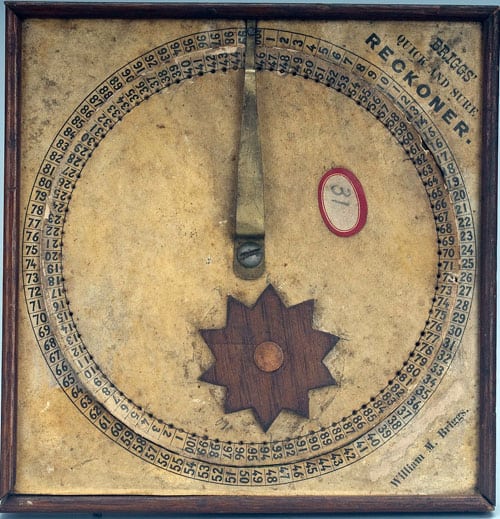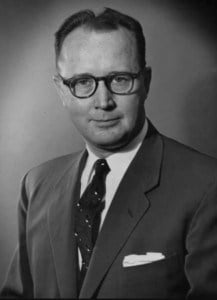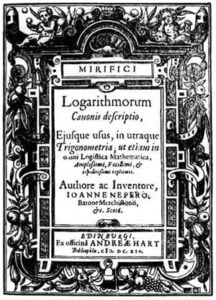When we think of the arithmetical calculator, we think of a small, rectangular, electronic device that can fit in a person’s hand. However, this is our modern-day perspective speaking. As it turns out, this standard design is only a recent innovation — in the early days of the arithmetical calculator, an inventor could try anything they pleased in any shape they liked as long as the device still got the job done.
Take inventor William Briggs, for example. His arithmetical calculator doesn’t look anything like what we use today, but its innovative design still managed to shape the history of the calculator as we know it. But who was William Briggs? And where did this important patent of his fall in with the rest of his life and career? Let’s break down all the most important information on Briggs to find answers to these questions and more.
Quick Facts
- Full Name
- William M. Briggs
- Net Worth
- N/A
- Children
- five
- Nationality
- American
- Place of Birth
- Connecticut
- Fields of Expertise
- [“Mathematics”]
- Institutions
- N/A
- Contributions
- The arithmetical calculator
Who Was William Briggs?
While his work as an inventor is what he’s most known for, the truth is that William Briggs was capable of far more than just securing a patent — he was also a family man who worked a hard and labor-intensive day job.

Career
Born in Connecticut in 1813, William M. Briggs eventually moved to Norfolk County, Massachusetts to work as a farmer and a miller. While he’s known best as an inventor, these jobs were where Briggs spent the majority of his days for the majority of his life. It wasn’t until 1879 — at age 66 and just eight years before his death — that Briggs received his first and, according to records, his only patent. For Briggs, though, that’s all he needed. His lone patent was more than enough to get him into the history books.
What Did William Briggs Invent?
In 1879, William Briggs invented an arithmetical calculator made of wood, metal, and paper. While it sounds somewhat unconventional, Briggs’s calculator worked exceptionally well. Measuring 2.2 cm x 15 cm x 15.4 cm, the adding machine had a square wooden frame with a piece of paper displaying the numbers 1 to 100 in a large circle. A slightly smaller rotating tin disk with 100 holes sat on top of this large circle and was covered with another piece of paper, also with the numbers 1 to 100 printed around the edge. On top of this disk was a second, smaller wooden disk with ten teeth around its outer edge.
The calculator’s carry mechanism was implemented by a fixed metal arm that reached over the edge of the rotating tin disk to reach the larger circle on the outside paper. This arm advanced the smaller disk at every rotation of the larger disk. Briggs theorized that additional wheels could be introduced to indicate thousand, ten thousand, and so on, but he simply didn’t include these wheels on the simple wooden and paper model he sent to the US Patent Office.
There is no record of Briggs’ calculator being manufactured commercially.
Using Briggs’ Calculator
Like many mechanical calculators, the operation of this one would have been time-consuming and cumbersome. In his patent, Briggs provides an example of how to add 18, 24, and 36 using his calculator.
“We first, by a pin or awl inserted in the hole at the division 18 on the rotary limb, turn the said limb around on its pivot until the pin may bring up against the arch C, and thus carry the division 18 of the limb A against the division 100 of the stationary limb. The next number being 24, we insert the pin in that hole of the disk which is opposite the twenty-fourth division of the stationary limb, and move the limb A, as before, until the pin may again bring up against the arch. Now opposite 36 on the scale of the stationary limb we shall find the number 78 of the movable limb, such number being the sum of the said numbers 18, 24, and 36.”

William Briggs: Marriage, Children, and Personal Life
Beyond his three distinct careers as a farmer, a miller, and an inventor, William Briggs was also a family man with an equally as interesting personal life.
Marriage
William Briggs married his first wife, Rebekah C. Briggs when he was a young man. Rebekah was born in 1810, making her just a few years older than him, and she died in 1851, leaving him a widower at the young age of 38. Naturally, Briggs remarried. His second wife, Elizabeth C. Briggs, was much younger. She was born in 1828, making her 15 years his junior. This time around, it was his own death that led to the end of the marriage. His widow would go on to outlive him by 12 years.
Children
William Briggs was the father of at least five children. Only three of their names are in the public record: Emma (born in 1850 to Rebekah C. Briggs), Frank (born in 1855 to Elizabeth C. Briggs), and George (born in 1858, also to Elizabeth).
Tragedy
The real tragedy of William Brigg’s life is that he was left a widower at the age of 38. It’s also quite tragic that, despite coming up with an important and history-making invention, the true extent of Briggs’s career as an inventor was likely truncated because of his need to provide for his family as a farmer and a miller first and foremost. There’s no telling what other ideas were floating around in his head that he wasn’t able to explore because of the demands of his day job.

